Guatavita: a legend lives on
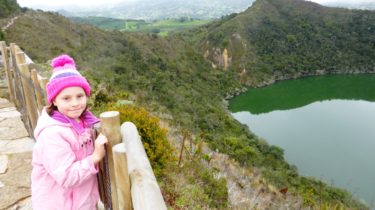
A version of this post appeared in The City Paper in 2014.
For related posts see 1538: Bogotá’s conquest
and Sunken Treasure: the Galleon San José
and The Giant Sloth Slaughter
At the end of this story is info and practical stuff on visiting Guatavita, which I highly recommend as a day out from Bogotá.
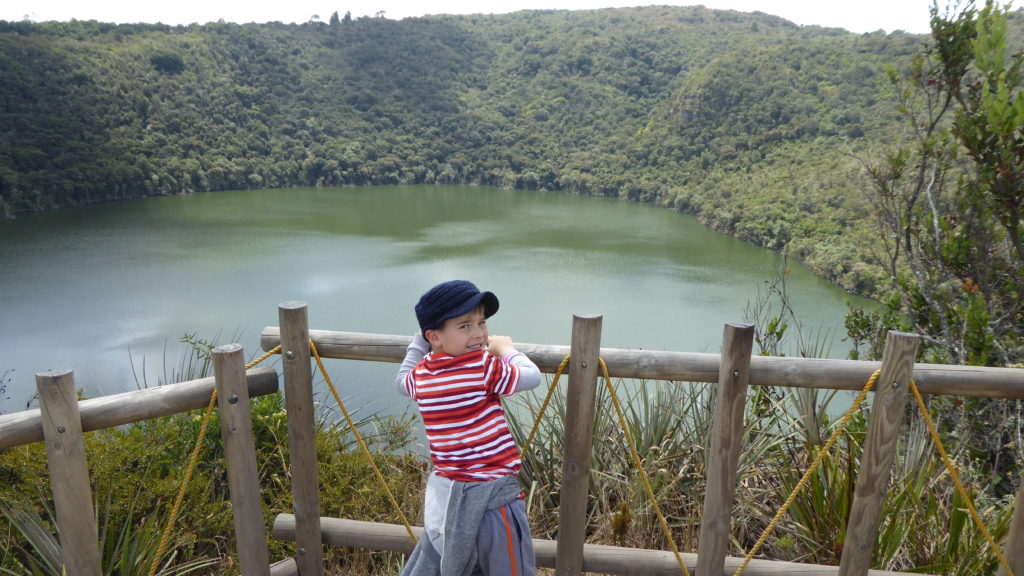
Laguna Guatavita is a small green lake set in a crater in a 600-hectare reserve the hills north of Bogota. The fact you need to climb up to this very circular body of water is somewhat strange: it doesn’t seem quite natural, and no-one really know how it was formed. Meteorite? sink-hole? Volcanic crater? And how does the water get in? Actually it might be a salt-deposit sink-hole fed by underground springs stemming from distant mountains. More surprising is that this chilly pond (it is only 300 metres across) spawned the legend of El Dorado, a myth so potent that for four centuries it drove gold-crazed explorers in to every corner of the continent (and many to early graves) and passed into the English language as the lost cities of fabled wealth (and named a thousand housing developments in Spain).
Passing the ´Miley Cyrus test´
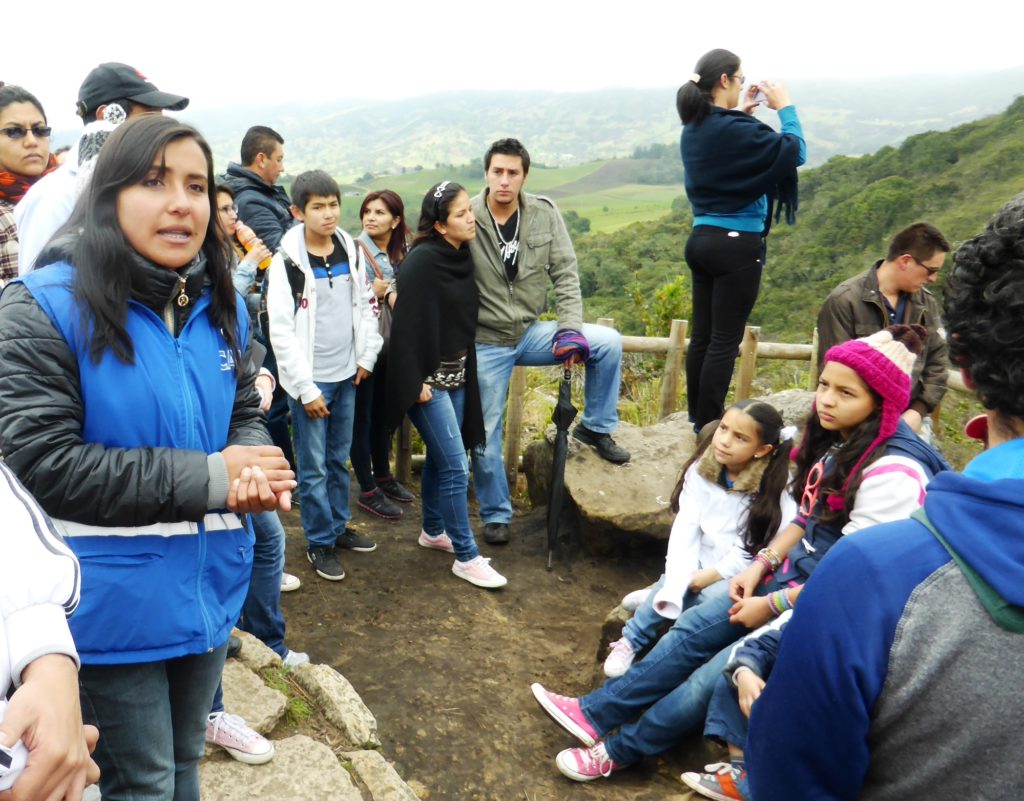
The story begins with a boy chosen to be chief, explains our guide as we huddle in the mist on the crater rim looking down at the lake. He lives in a cave for nine years then emerges to take part in an erotic dance with nearly naked village maidens, whom he must manfully ignore. If he passes this test he becomes ruler of the Muisca empire, an advanced community of farmers and artisans covering a large chunk of the Andes. But first he undergoes an elaborate initiation ceremony to appease the Muisca gods. He is covered in honey and gold dust, sails into the lake on a raft with many attendants, then washes off in the gold lake and throws in some jewellery. Being gold dusted made him golden, El Dorado, the ´Golden One´.
You see, El Dorado is a person not a place. This is something of a revelation since I always imagined El Dorado as a city lost in the jungle, not a cold lake, and certainly not a kind of pre-Colombian Liberace with expensive taste in skincare being twerked at by early versions of Miley Cyrus.
The Lost City
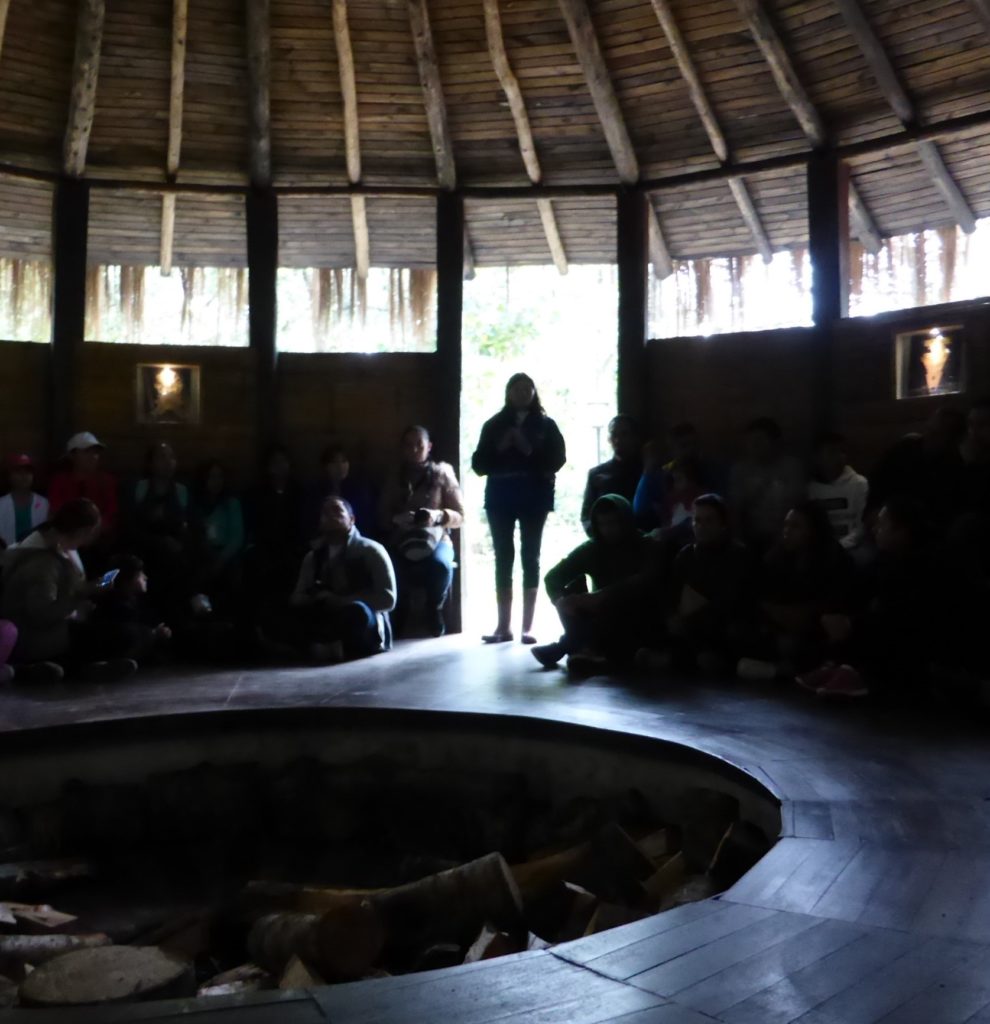
So how did the ´lost city’ myths start? Perhaps when Spanish conquistadors were busy grilling locals (in some cases literally) to find their gold. The El Dorado ceremony was already recounted on the Caribbean coast, where the Muisca had trading links, and the locals quickly learned to distract the Spanish with embellished tale of lost cities…´somewhere over those mountains over there´…in the hope the Spaniards would saddle up and ride on.
Conquistadors didn´t need much convincing. They were so hungry for gold their reluctant hosts concluded they must feed it to their horses. In fact, tons of priceless cultural artefacts were melted down then shipped back to Spain as ingots. This was more than just naked greed; the conquisting business model relied on ever-expanding acquisition. New World expeditions were costly (akin the Apollo moon shots in real terms) and the only kick-starter from the Spanish crown was a ´licence to pillage´ with the caveat to send tons of treasure back to Spain. Not surprising El Dorado went viral. What is surprising is how long the legend endured.
The Spanish had El Dorado on their radar since the 1530s, but it would be another decade before they subjugated the Muisca and founded colonies in the Bogota valley. By 1545 the conquistadors had heard first–hand accounts of Guatavita´s ceremonies from Muisca elders and the peso dropped; this was the lake of the legend. And how do you find treasure in a lake? Why, empty it of course. Thus started a 400-year assault on the sacred waters to take out what the Muiscas had thrown in, a desecration that claimed many lives of the Muiscas themselves, now destined to work for their Spanish usurpers, in a series of an increasingly desperate mission employing ingenious and sometimes bizarre techniques to get the gold.
Desecrating the sacred lake
The Spanish made their first attempt in 1545 and set relays of Muiscas scooping out lake water in clay pots, a few decades later 8,000 labourers set to work cutting a huge notch in the crater rim (the remains of which can be seen today) draining out 20 metres of water to find more gold trinkets in the mud before the workings collapsed killing many people. Historical accounts vary wildly on what treasure was found, but invariably describe financial ruin for the Spanish entrepreneurs after the Crown had took its cut of his booty. Over the next two hundred years and many attempts no-one hit the jackpot, but failure it seems just spurred on the gold-crazed colonists, both deeper into the lake and further into uncharted corners of South America with the dubious logic that ´if the treasure isn’t here…then it must be over there…´.
Once it took root, the El Dorado legend grew like a jungle vine and then morphed into a ´city´ then an ´empire´ that began to appear on maps sent back to Europe. This fired up the next wave of chancers who sold the stories to credulous investors: ‘why, here it is on the map…we just need to find it´. By the late 1590s, The Golden Man was anywhere you wanted him to be and needed an excuse to go!
Lost in the jungle
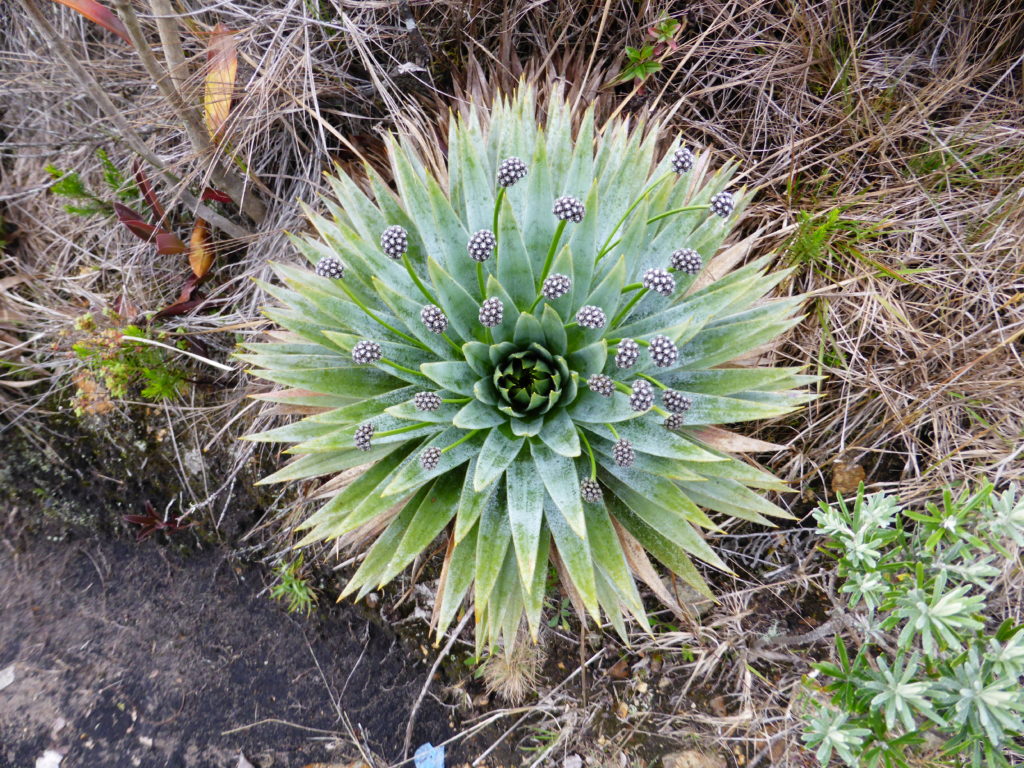
In the new colonies of Peru and Gran Colombia the Spanish administrators used El Dorado as a subterfuge to get rid of the meddlesome old Conquistadors who stood in the way of progress: send them to the jungles to find lost empires, with a good chance they never come back. Such was the fate of ´El Loco´ Aguirre, a man so desperate he killed his own daughter to protect her virginity. His murderous rampage down the Amazon and Orinoco rivers found nothing but death and eventually his own. He was shot by his own troops ´his body cut up and bits sent to different cities of Venezuela´.
The British aristocrat and seafarer Sir Walter Raleigh fared little better. Determined to find El Dorado before the Spanish, he skirmished with them in the Orinoco River where his son died in combat, and sailed home to a beheading by King James fed up with warmongering and exaggerated treasure tales.
Bad science
Back at Laguna Guatavita the search never stopped, far from it, and things really hotted up after a visit in 1801 by naturalist Alexander von Humboldt. This most acclaimed scientist of his day used a distinctly daft method to value of treasure: he measured the lake and estimated that if 1,000 Muisca a year had each chucked in 5 gold objects for over 100 years then there was at least US$300 million-worth of goodies still lurking in the green depths. This calculation was revised upwards by other ´experts´ to US$ 1.5 billion, a figure published as fact in early travel guides to South America thereby ensuring new generations of treasure hunters.

More attempts to cut through the crater rim and lower the lake level failed, usually with loss of human life and financial backers´ investments. Between 1823 and 1826 a local businessman Pepe Paris teamed up with a British navy Caption Charles Cochrane to dig a series of trenches and tunnels. Eventually the tunnel collapsed causing more Indian labourers to perish, and leaving Chochrane and Paris destitute. Back in England, Cochrane clawed a living by singing Spanish songs under the guise of ´Señor Jean de Vega´ never knowing that nearly 200 years later Iron Maiden would record El Dorado, a heavy metal lament on the lost cause of imagined wealth. It won a grammy and possibly went gold.
Contractors Unlimited
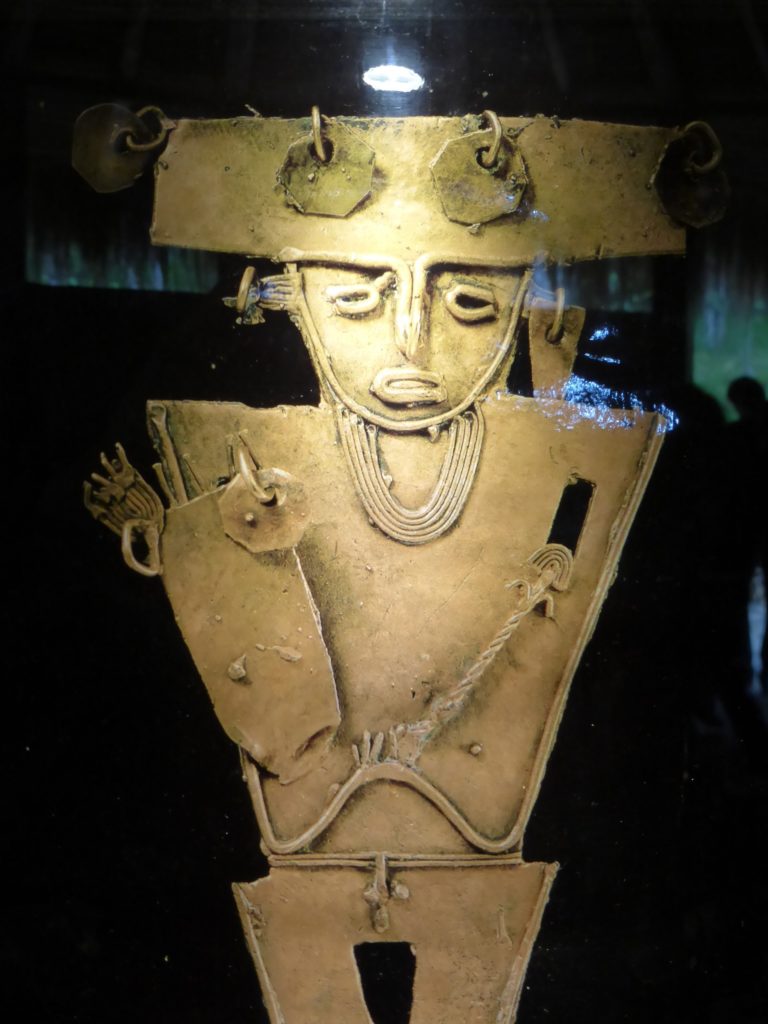
Then in 1898 a man called Hartly Knowles formed ´The Company for the Exploitation of the Lagoon of Guatavita’, a refreshingly honest title later contracted to ´Contractors Limited´. He arrived at the lake with huge fanfare and mule trains carrying the pride of British technology: a very large steam pump. Thus began an industrial-scale attempt spanning over a decade that culminated in a 400m shored tunnel from the centre of the lake. This channelled water and mud through a sluice system with mercury to capture the gold. By 1904 the lake water was drained but its base was bottomless mud that after hot sun baked hard like cement. In terms of treasure the pickings were slim, though in 1912 the New York Times did run a detailed report with the fascinating note of ´Chinese jade figures´ in among the Muisca artefacts. (Did the ancient Muisca trade with the Chinese? Or were these items from nearby Central America? Another mystery awaits.) But as Knowles relates in the article, most gold found was beaten very thin and did not weigh much. The haul was sold for 500 guineas at Sothebys in London, the company sunk, and natural springs filled the lake back up.
You would think by now that people would just give up but no, the legend stuck. In the 1930s hard-hat divers floundered around in the mud 30 meters down, a both dangerous an unpleasant task with few rewards, and in the 1950s the lake was dredged with steel balls and clamshell grabs, all for nothing. Then in 1965 the famed US treasure diver Kip Wagner announced Colombian Exploration Inc; destination Guatavita. Kip never showed. The Colombian authorities had enough, the lake became protected and the treasure hunters sent packing.
Return of the Muiscas
Standing on the crater I can hardly imagine those years of frenetic toil driven by lust and greed. The lake has an eerie calm, broken only by the chirping of birds. The sun peeps out from the mist and bathes surrounding farmland in green and gold. In the thin chilly air – we are 3000 metres above sea-level – it is easy to comprehend why Andean tribes worshipped the sun. For the Muisca, gold was mnya, the suns energy incarnate. Our guide asks us to honour the Muisca past: we turn our backs on the lake and cup our hands on an imaginary ball of golden light, turn back to the lake and gently blow our golden wish towards the waters below.
So the story turns full circle. Today Guatavita is managed by descendants of the Muisca people who still live on the plateau. It forms a small national park which welcomes visitors who come for the 90-minute guided tour and walk up the steep rim. The lake also seems to be a focus for a small re-discovery of the Muisca culture whose language, Chibcha, was banned by the Spanish in 1770, though ironically absorbed in the myriad Chibcha-based place names used today including Bogota (Bacata), Zipaquira, Ubate, Teusaquillo – the list is long – and even street slang such as chinita for girl. Now for the first time in centuries Chibcha is being taught again in a local school.
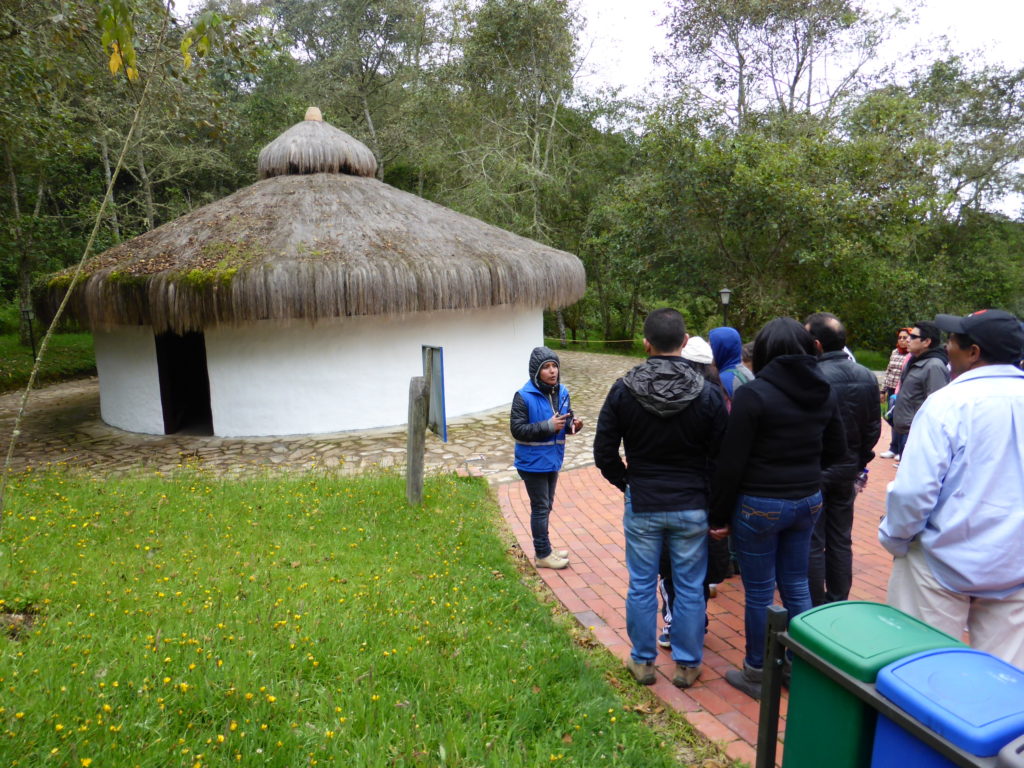
So what happened to the treasure? Was there ever any treasure? Von Humboldt´s bad maths overlooked the simple fact that in unlike the Incas and the Aztecs, the Muiscas had no gold mines. The little gold they came from barter. Could they throw that much gold into the lake? And what went in surely was found by pioneer treasure hunters centuries back. Or was it?
Our guide laughs. The lake, she says, was ´like a friend to the Muiscas´.
´And when you give a friend a gift do you throw it at them?,´ she asks. ´No,´ we say in unison. ´Do you hand it to them´. She has a twinkle in her eye, pure gold.. .´Yes´ we chant. ‘You see, the Muiscas never threw gold into the lake. That would be disrespectful. They buried it around the lake´. To make her point she shows us photos of treasures a workman found in a ceramic vase while excavating a pathway just a year back. There is a moment of silence. Driving back to Bogota my head is spinning. All those people floundering about in the lake for all those years and all they needed to do was …. dig around the edge.
So what about the lost cities? Were they just a dream? Conquistador Francisco de Orellana made the first decent the Amazon in 1542 and reported vast riverside settlements estimated at hundreds of thousands of inhabitants. Was this more exaggeration? Perhaps not. Archaeologists now believe that large advanced communities did inhabited the Amazon at the time of Colombus, but these were quickly decimated by Old World diseases like smallpox that spread through populations ahead of the Spanish conquest. Jungle cities built in wood and clay once abandoned were quickly reclaimed by nature and left few traces, unlike as the stone buildings of Andean tribes. Cities were lost even before the first explorers could get there. In recent decades satellite imagery has revealed giant earthworks in South America´s jungles that hint at vast human settlements, since swallowed up by vegetation. Some are still waiting to be found. The legend lives on.
Practicalities
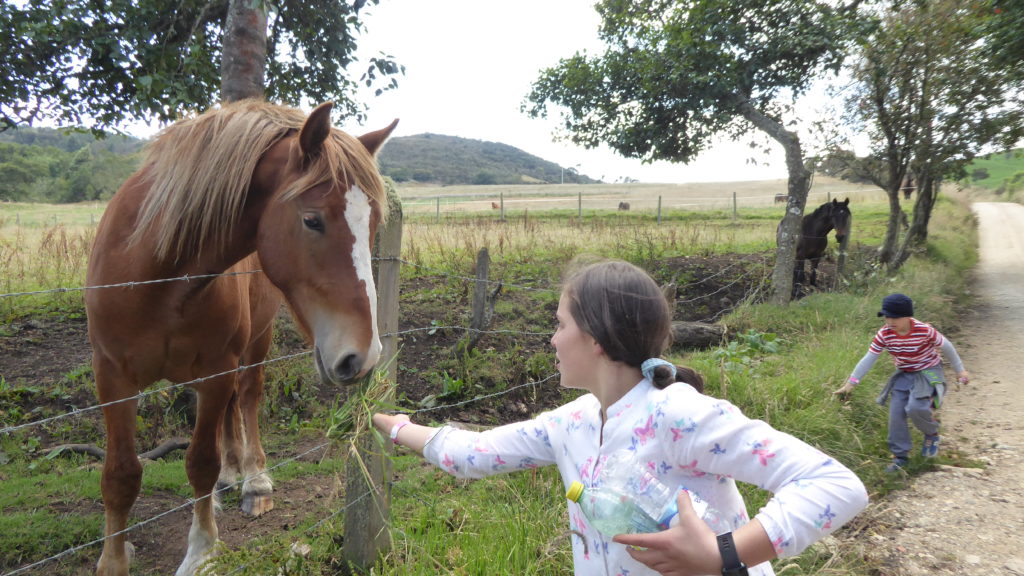
Lake Guatavita National Park is at 3,100 metres in the Andean hills, 57 kms and 90 minutes drive north-east of Bogota.
Check out my post on Altitude effects here.
When to go – on weekends and bank holidays the lake is very busy and the car parks overflowing, the peak time is after 12 noon. Get there as early to avoid the rush. Weekdays are less of a problem.

Arriving by car: To get there by car from Bogotá take the Circunvalar then exit to La Calera, you will pay a road toll on the way. On Sundays be patient with the hundreds of cyclists. Head to Guasca and then the town of Guatavita, which lies on the east bank of the Tomine Dam Lake. From here it is another 30 minute drive to the lake, which is well signposted. The final 3kms is unpaved but OK for cars.
If you are car-less, many tour companies like Bogotá Pass that run half-day trips from Bogota which can be booked at the hostel/hotel where you stay. If you are in no hurry you can also hop buses from Bogota heading first for La Calera, then Guasca and Guatativa. This is a very popular route, some people hitch a ride the last bit.

On arrival: However you get there you arrive will arrive at a car park and entrance and wait for the next tour group to leave, after paying about US$6 entrance fee (Colombians pay a bit less, kids are free). There is coffee, snacks and toilets at the entrance. The tour last 90 minutes (you can only enter on the tour) and involves a short steep climb on rocky steps to the crater rim, its is not difficult and kids over 4 years will be fine if they take it slow. The tour ends on the far side of the lake and you can walk back to the car park on local roads (one hour) or take a shuttle bus (US$0.50).

Some tips:
– Set off early on the weekend as tour spaces are limited and most people arrive around 12pm. Aim to arrive before 10am.
– Lunch: there are good snacks at the park, but the roadside restaurants close to the Lake are poor quality. Much better to eat in the town of Guativita on the way back to Bogotá.
– Some walks: the tour ends on the north side of the lake where there are mini-buses waiting to take you back to the entrance, for a small fee. Or you can walk, about 1 hour, takes you by some nice rural scenery. At Guativita town there are also good short walks around the dam lake, and horse hire.
– What to take – warm and waterproof clothes, it can get chilly at the lake, around 10 deg C.
– Driving back – on Sundays and Bank Holiday the road to La Calera gets very busy as rolos head to the nearest rural restaurants. On my last trip here I saw a 10 kms tailback from Bogota to La Calera caused by people queuing for road-side restaurants, this seems to peak at 1 to 3pm. Luckily we were heading down the hill which was fine. Get out and back early is my advice for these days, whether by bus or car.
